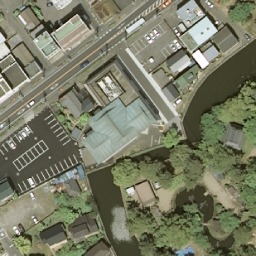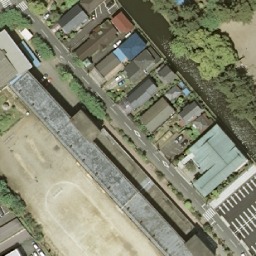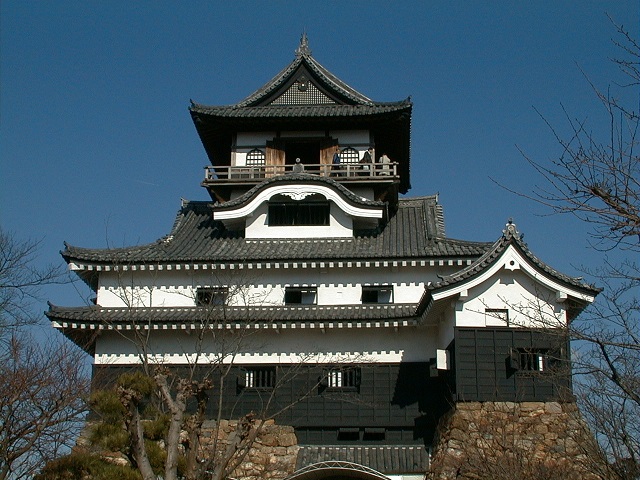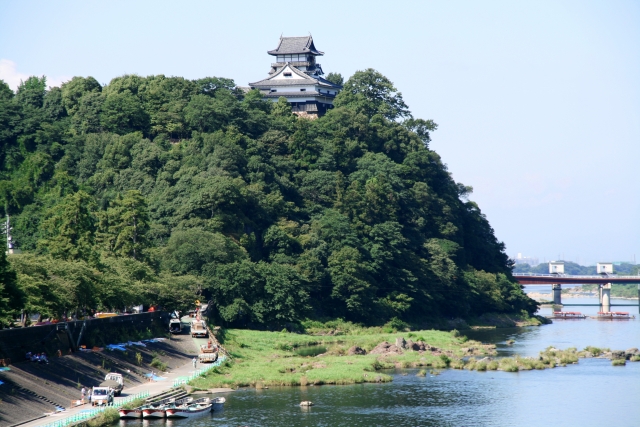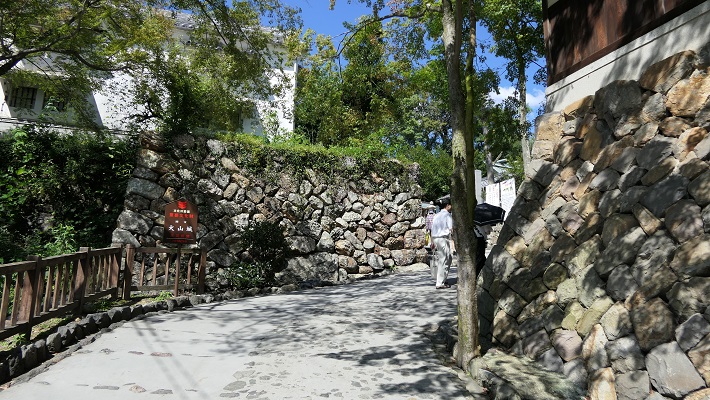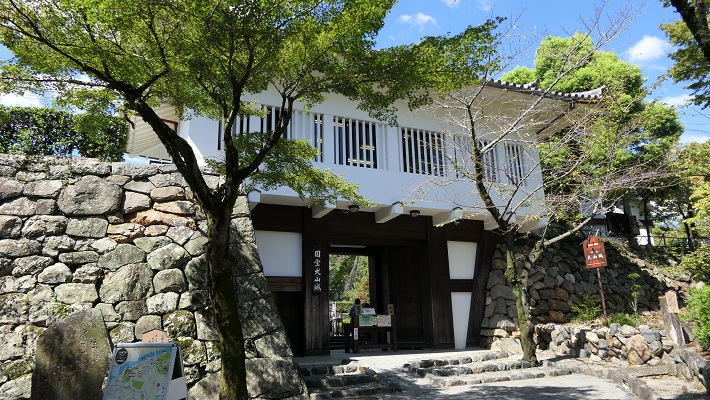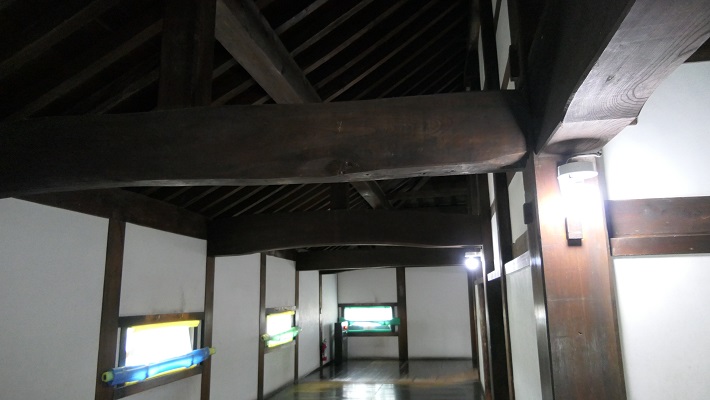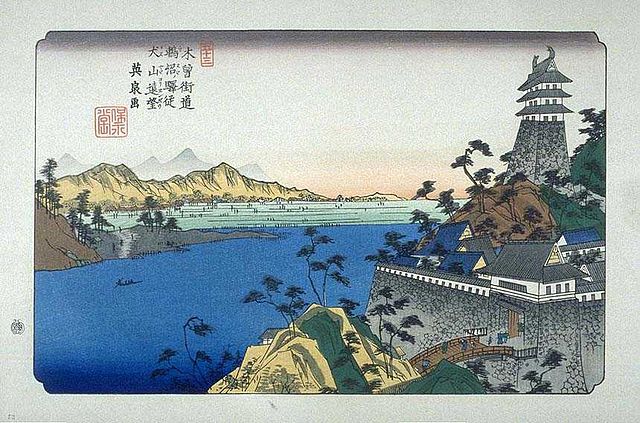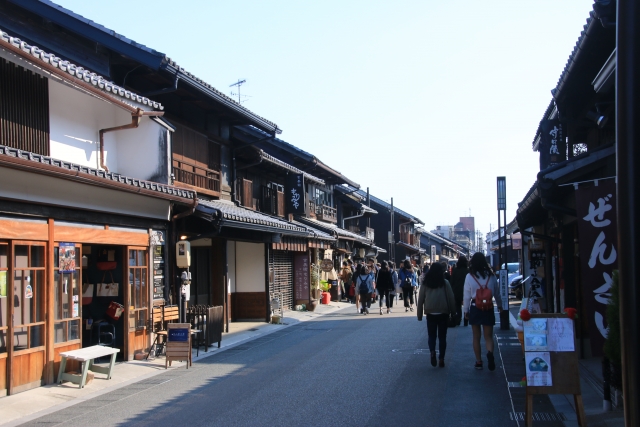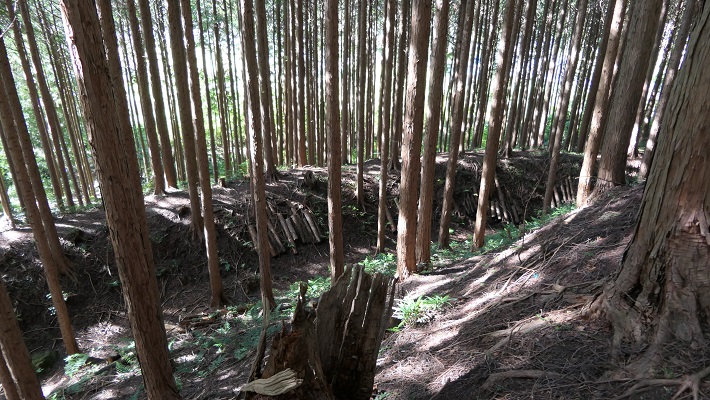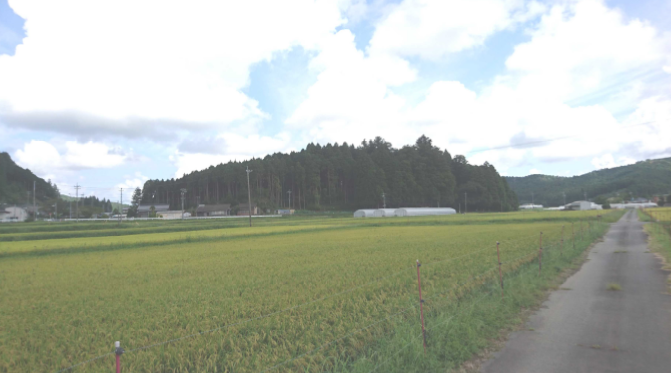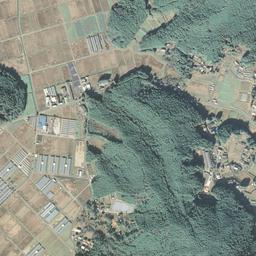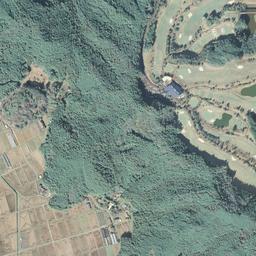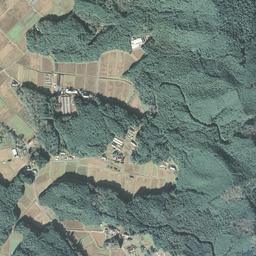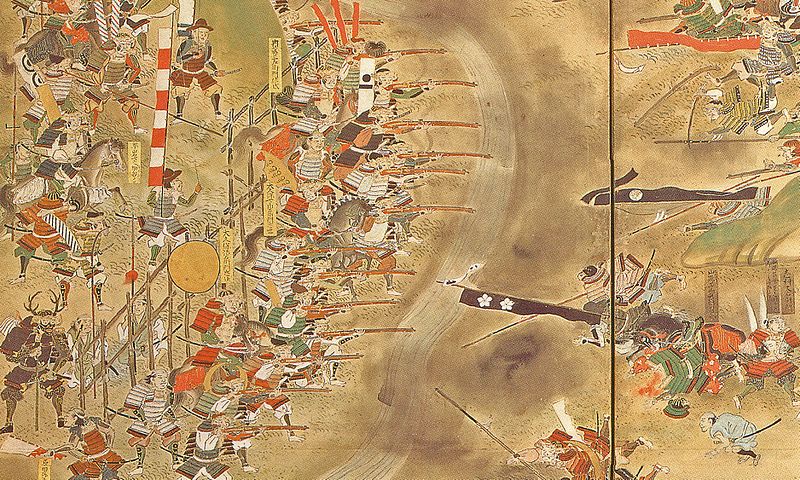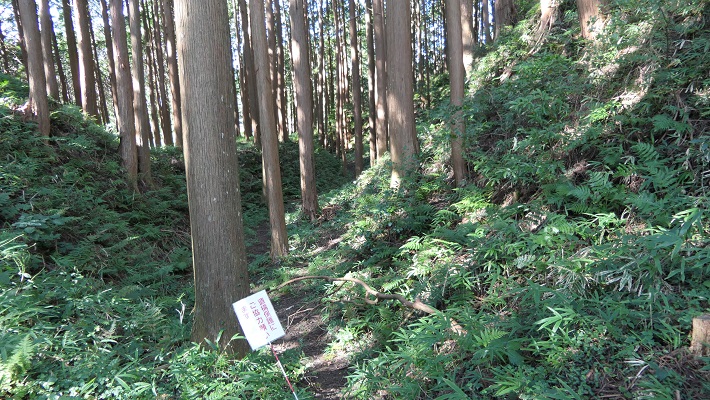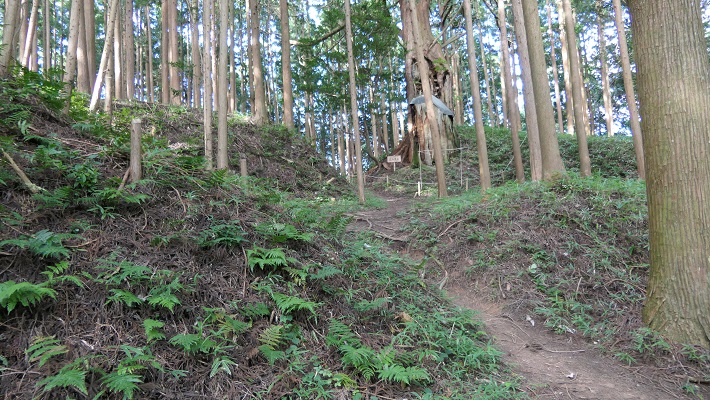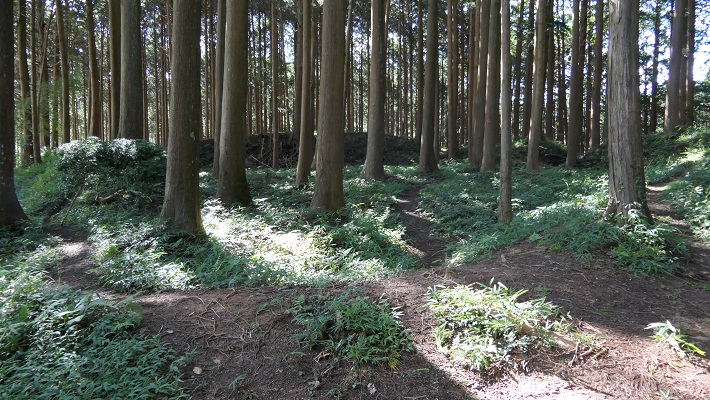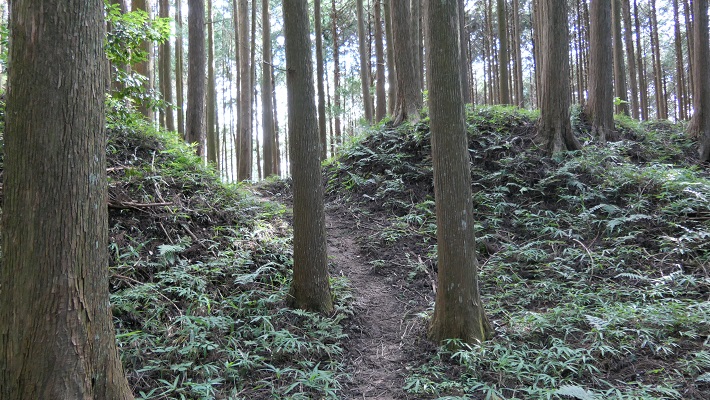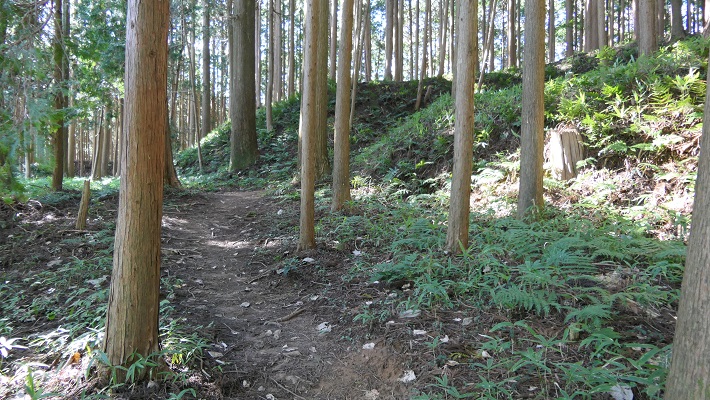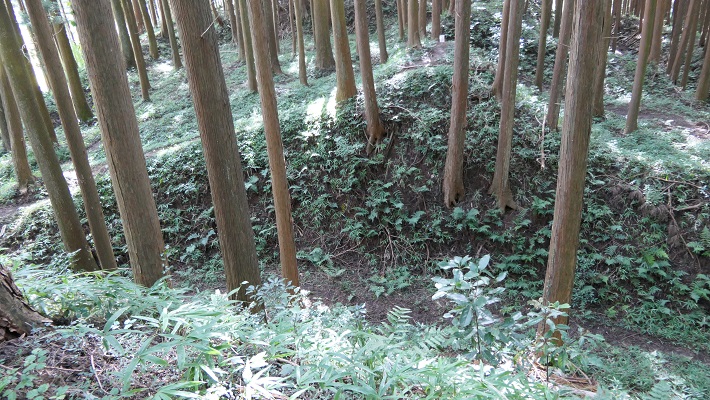立地と歴史~Location and History
城は交通の要地~The castle has a good location for transportation
土浦市は茨城県の南部にあり、水戸街道に沿っています。また、霞ヶ浦の西端にもあたります。過去においては、このような環境は水陸交通の結節点として絶好の立地となりました。この街は、江戸初期辺りから大いに栄えました。
Tsuchiura City is located in the south part of Ibaraki Prefecture, along Mito-kaido Road. It is also beside the western edge of Kasumigaura Lake. In the past, this environment provided a perfect intersection of transportation for land and waterways. The city flourished since around the first Edo Period.
土浦城は、それより以前に小田氏により築城されましたが、街と同時にに少しずつ拡張されました。この城は土浦藩の本拠地でしたが、最初の頃領主が度々変わりました。最終的には土屋氏が17世紀後半から江戸時代末期までこの地を治めました。
Tsuchiura Castle was developed little by little at the same time, though it was first built earlier by the Oda clan. The castle became the home base of Tsuchiura Feudal Domain where several clans governed by turns at first. In the end, the Tsuchiya clan governed the area from the late 17th century to the end of the Edo Period.
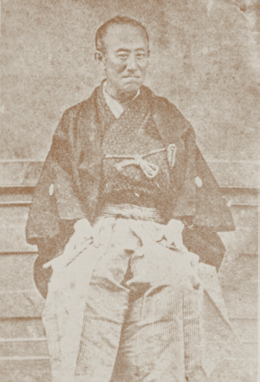
土塁と水路の城~ A castle with earthen walls and waterways
土浦城には「天守」や石垣はありませんでした。その代わりに「本丸」にはいくつかの櫓と門があり、土塁と水堀に囲まれていました。二の丸などの他の曲輪は本丸の周りにあり、多くの水堀や水路につながっていました。
Tsuchiura Castle had no “Tenshu” or main tower and no stone walls. Instead, the main enclosure called “Honmaru” had several turrets and gates, and was surrounded by earthen walls and a water moat. Other enclosures such as Ninomaru were set around the Honmaru, connecting with many water moats and waterways.
発掘により本丸の土塁は、4段階の工事により積み上げらられ、より強固にされたと判明しました。。最終段階では、防水や美観のために石が敷かれていました。このような立地のため、この城は何度も洪水に襲われましたが、城の中心部分は決して水面下に沈みませんでした。洪水の時期には、城は水に浮かぶ亀のように見えたそうで、そのためこの城は「亀城」とも呼ばれました。
Excavation shows that the earthen walls of Honmaru were built by a four-step construction process, lending extra strength to the walls. In their final state, the walls were covered in stones for protection from water and also for aesthetic value. Due to its location, the castle suffered from floods several times, but the center of the castle never sunk under the water. During the flood season, the castle looked like a tortoise floating in the water, so people have called the castle “Ki-jo” or the Tortoise Castle.
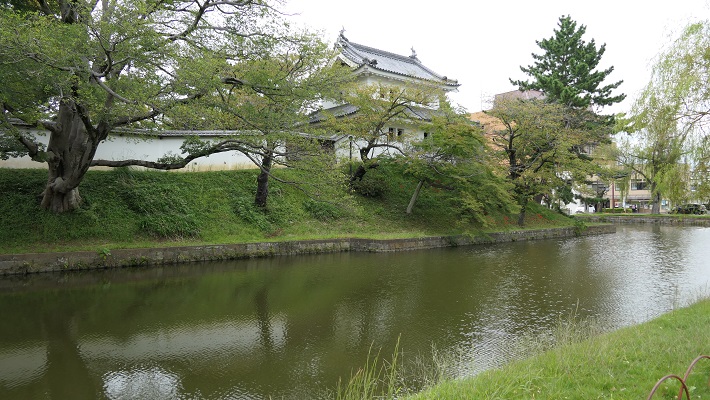
特徴~Features
現存する建物~Remaining buildings
現在、ほとんどの土浦城の土塁と水路は、街の近代化のため、撤去されたり埋められたりしました。実際、JR土浦駅から城跡への通りでさえ、昔は水路の一つでした。その通りには水路だったことを示す掲示と塗装がなされています。
Now, most of Tsuchiura Castle’s earthen walls and waterways have been removed or filled to modernize the city. In fact, even the street from JR Tsuchiura Station to the castle ruins was one of the waterways in the past. You can see the sign and painting which shows that was a waterway on the street.
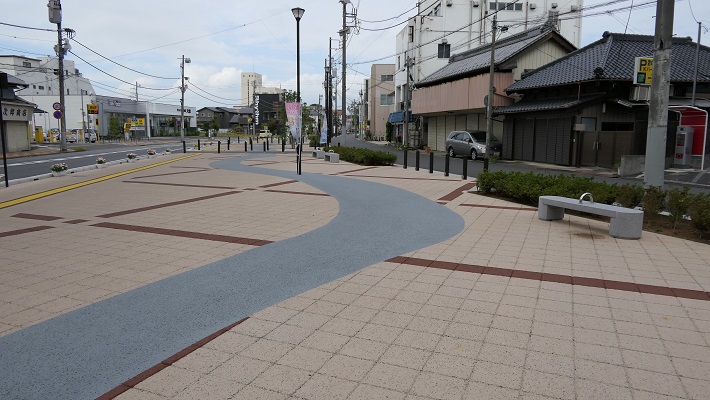
本丸と、二の丸の一部の跡地が亀城公園として残っています。本丸はまだ水堀に囲まれ、亀のように見えますし、現在建物もあります。
The ruins of the Honmaru and part of the Ninomaru remain as the Ki-jo-Koen Park. The Honmaru still looks like a tortoise surrounded by its water moat, where several buildings are now.
「太鼓門」と呼ばれる正門はオリジナルです。関東地方では唯一の本丸で現存している櫓門です。
The front gate called the Drum Tower or “Taiko-mon” is the original. This is the only remaining turret-style gate in Honmaru in the Kanto Region.
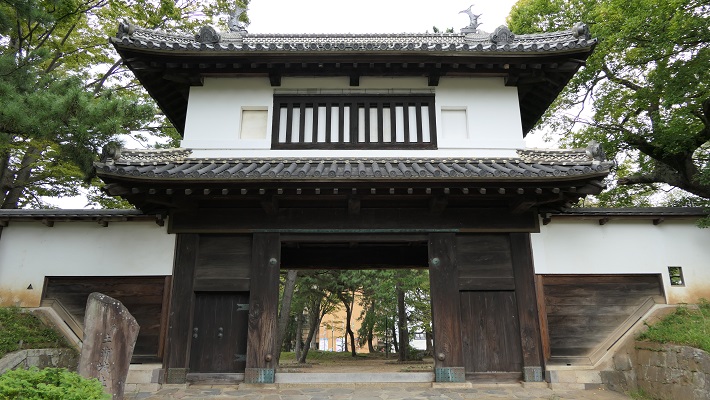
「霞門」と呼ばれる裏門も現存しており、簡便な薬医門という形式です。東櫓と組み合わされて出入口を守っていました。
The back gate called “Kasumi-mon” is also original and has a simple “Yakui-mon” style. It was used combined with the East Turret or “Higashi-yagura” to guard the entrance.
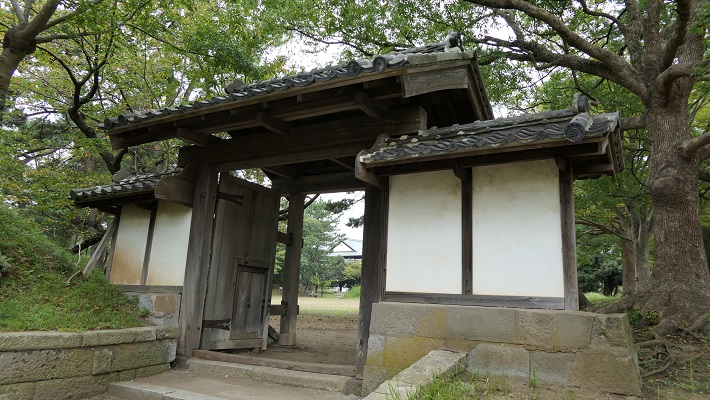
復元された建物~Restored buildings
東櫓は1998年に、元の状態に近くなるよう伝統的工法で復元されました。土浦市立博物館の別館としても利用されています。
The East Turret was restored in 1998 using traditional methods, to resemble its original state. It is also used as the annex for Tsuchiura City Museum.
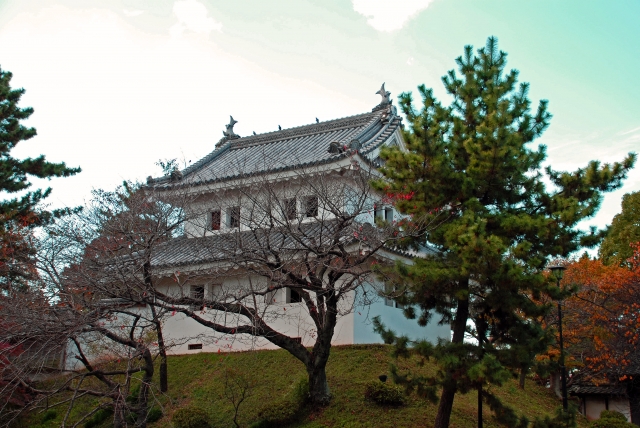
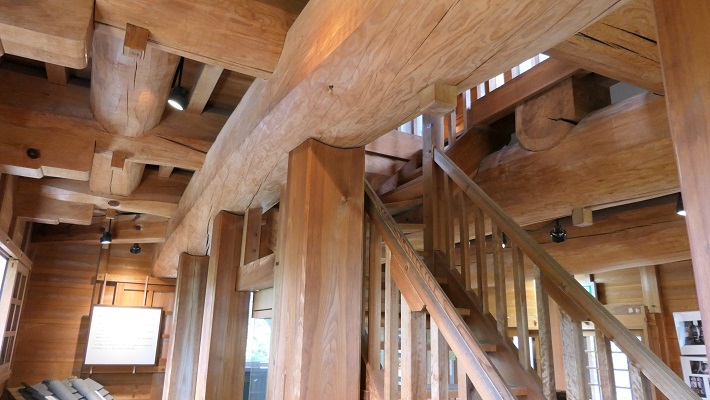
もう一つ西櫓があり、1949年の大型台風で破壊され、1950年に撤去されましたが、元から使われていた資材を利用して1991年に復元されました。
There is aother turret, the West Turret or “Nishi-yagura” which suffered damege from a big typhoon in 1949, was demolished in 1950, but was also restored in 1991 using the same materials as in the original construction.
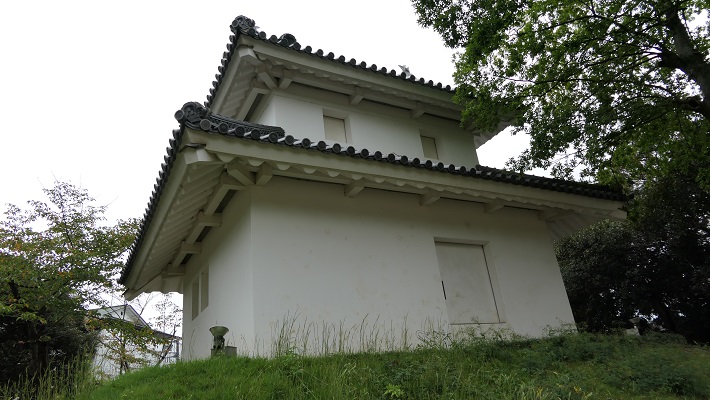
本丸の内部は空き地になっていて、以前には御殿がありましたが、明治時代の火事で焼けてしまいました。
The inside of the Honmaru is empty where the main hall stood which was burned out by a fire in the Meiji Period.
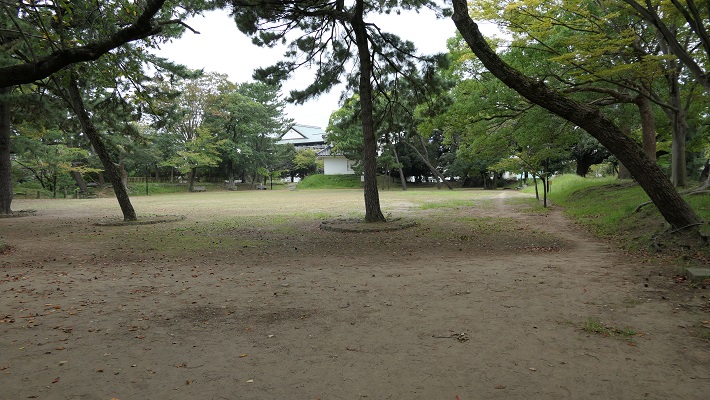
更には、本丸の土塁上には太鼓門と東櫓をつなぐ白壁が復元されたことで、本丸の外側からは、復元された城の外観を楽しむことができます。
In addition, the plaster wall between the Drum Tower and East Tower was also restored on the earthen walls of the Honmaru, so you can see the restored appearance of the castle from the outside.
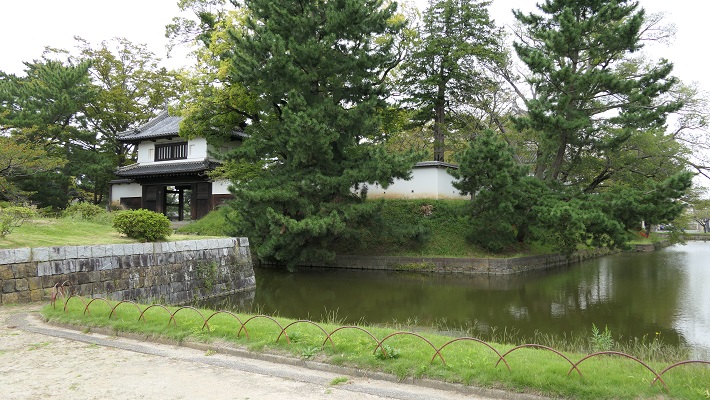
その後~Later History
明治維新後、土浦城は地方政府庁舎に転用されました。本丸御殿はそのために使われたのですが、残念なことに1884年に焼失しました。しばらくして、城跡は1899年に亀城公園となりました。1988年には二の丸区域に土浦市立博物館がオープンしました。そこでは土浦市の歴史や文化、そして土浦城のことも展示しています。亀の形に似ている城の中心部の模型を見ることができます。
After the Meiji Restoration, Tsuchiura Castle was turned into the hall for the local government. The Honmaru main hall was used for it, but unfortunately it was burned down in 1884. After a while, the castle ruins became the Ki-jo-Koen Park in 1899. The Tsuchiura City Museum has been open since 1988 in the Ninomaru area. It has exhibits about the history and culture of the city as well as the castle. You can see a miniature model of the castle’s center portion, resembling a tortoise.
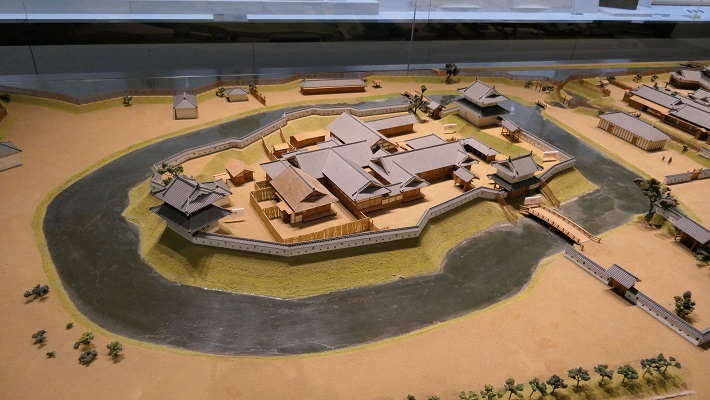
私の感想~My Impression
霞ヶ浦は現在、日本で琵琶湖に次ぐ2番目に大きな湖です。中世初期までは内海だっともいいます。土浦市はまた、近代まで洪水の被害を受けていました。水を制御するのは難しかったのでしょうが、この地域の人たちはそれを成し遂げたのです。城跡の地は、周りの敷地よりも少し高くなっており、それを見たとき、人々が城を災害からの被害を防ぎ、城を守ろうとした努力の跡だと理解しました。公園は今は閑静でくつろげる場所となっています。
Kasumigaura Lake is now the second largest lake in Japan, following Biwako Lake. It had been an inland sea until around the first Middle Ages. Tsuchiura City also suffered from floods until the Modern Ages. It seemed to be difficult to control the water, but people in the area were able to use it. When I saw the castle ruins set a little higher than the area around, I was able to understand people made great efforts to prevent disasters and protect the castle. The park is quiet and a relaxing place now.
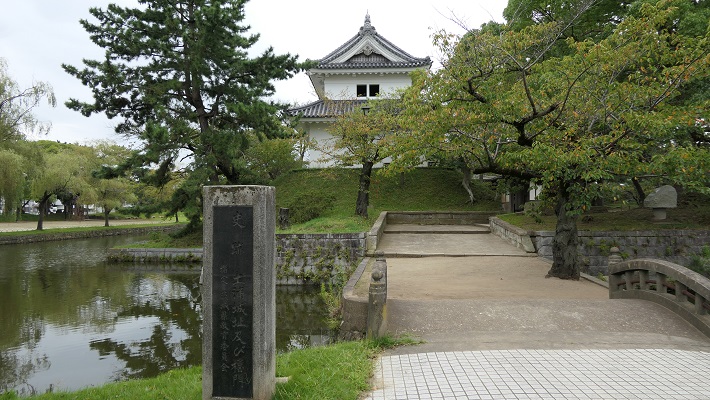
ここに行くには~How to get There
車で行く場合:常磐自動車道の佐倉土浦ICか土浦北ICから約15分です。博物館に駐車場があります。
電車の場合は、JR土浦駅から歩いて約15分です。
If you want to go there by car: It takes about 15 minutes from the Sakura-Tsuchiura IC or the Tsuchiura-Kita IC on Joban Expressway. The museum offers a parking lot.
When using train, it takes about 15 minutes on foot from JR Tsuchiura station.
リンク、参考情報~Links and References
・「よみがえる日本の城15」学研(Japanese Book)
・「史跡 土浦城跡」土浦市教育員会(Japanese Report)


























